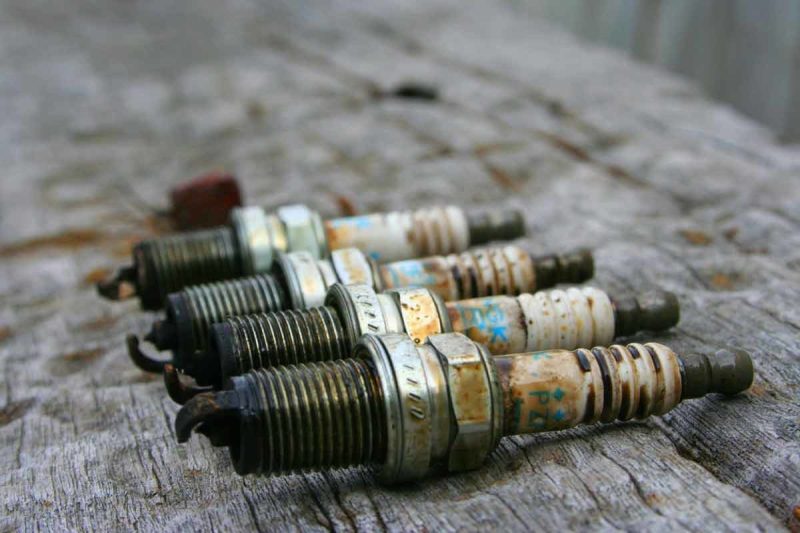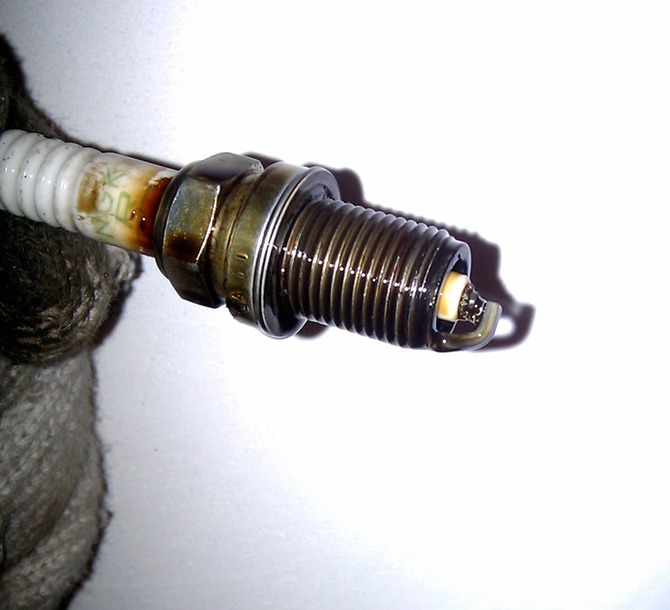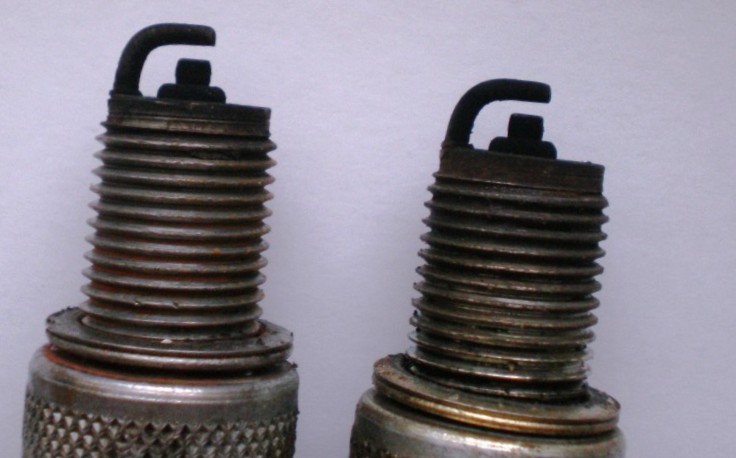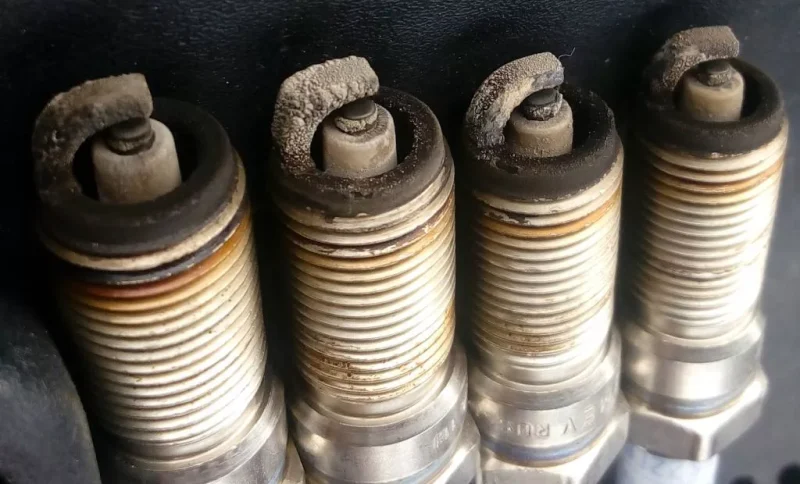Combustion of the fuel-air mixture in the cylinders is the main process for the engine, the quality of which directly affects the stability and dynamics of the car, the life of the engine and the catalyst. In gasoline engines, the fuel-air mixture is ignited by an electric spark, which is produced by spark plugs. In this case, the initial quality ignition of the mixture is largely the key to effective engine operation.
Meanwhile, the spark produced by spark plugs can be different in strength, temperature and volume. Accordingly, the ignition of the fuel mixture occurs differently (or not at all). The best and strongest is a large and bright blue-white spark, the weakest is blue and the worst is a small yellow-red spark, which can be “incapable”, especially in frost.
The cause of a “weak” spark (with all the ensuing engine problems) can be both the plugs themselves, initially low-quality or dirty, exhausted their resource, and malfunctions in the ignition system of the engine. Due to corrosion and contact failure of high-voltage wires and coils there are micro-breakdowns, voltage leaks and it is not enough to form a spark of sufficient power. There may also be other causes – faults in the low voltage circuit and alternator.
Age and fuel problems
Almost all cars with mileage over 5 years old have these problems to some degree. Therefore, it often happens that even after replacing the plugs, the quality of ignition does not improve or improves insignificantly, and the motor as troil and poorly started, and continues. Especially acute all “sores” are manifested during frosts, when the vaporizability of gasoline is reduced and the fuel mixture ignites much worse, requiring a more powerful spark for ignition than in the warm season.
It is typical for “old age” cars whose engine life has “crossed the equator” to have oil from the engine lubrication system enter the combustion chamber through the oil caps (valve seals), cylinder head gasket and oil rings. The burning oil causes black-brown oily soot on the plugs, which prevents the spark from traveling between the electrodes.
And finally, even for new cars there is a problem of low-quality fuel, which can be refueled even in a city with a million people, not to mention the countryside and highways. Additives added to gasoline on the basis of iron and manganese, from which candles are covered with a characteristic brick-colored plaque, pose a special danger. This reduces the power of the spark and causes breakdowns – improper passage of spark between the center electrode and the skirt of the threaded part.
Thus, for all the variety of causes and preconditions, the consequence is always the same – lack of high voltage, which reduces the quality of the spark until it completely disappears.

Practice shows that all processes occurring in the combustion chamber, impose a specific imprint on the appearance of the plug. Therefore, its condition can serve as one of the diagnostic parameters to determine how the engine works.
Normally working plug
A normally functioning plug has the color of the insulator heat cone ranging from light gray to light brown. This is due to the presence of a small amount of combustion product deposits, also visible on the surfaces of both electrodes. There is no or negligible erosive wear on the electrodes and there are no signs of overheating.
Such condition of the plug indicates that its thermal characteristic (caliber number) corresponds to the norm. The engine and all its systems work properly, there is no cause for concern. You have avoided refueling with low-quality fuel with low octane number and high percentage of tetraethyl lead.
After checking and adjusting the plug, you can safely return it to its working place. You will not encounter problems with starting the engine and failures in spark generation during its operation for a long time.
Wear of the plug
The insulator is of normal color, and the edges of the side and center electrodes are rounded as a result of erosive wear. The electrode gap is unacceptably enlarged.
Such a plug guarantees problems when starting the engine, especially in cold weather, and increased fuel costs.

There is only one reason for this – untimely inspection and replacement of plugs. A worn-out plug should be replaced with a new one with the same thermal characteristics.
Fuel contamination
The insulator and electrodes of the plug are covered with wet black deposits. The plug smells of fuel.
This indicates that at some modes of engine operation the power system prepares too rich fuel mixture. It does not burn completely and forms a large amount of soot. In addition, the cause of such a phenomenon can be unstable operation of the ignition system, leading to failures of spark formation, as well as the use of an excessively “cold” plug.
The spark plug can be restored. To do this, it should be washed in gasoline, cleaned with a copper brush and dried. But this will only solve the problem for a while: if you do not find out and eliminate the cause of the malfunction, the plug will soon acquire its former appearance.
Oil contamination
The electrodes and insulator of the plug are covered with slag, which has an oily sheen. With prolonged use, you can get a result as unsightly as the one pictured. Here the process has gone so far that the insulator and electrodes are completely caked with oil combustion products. This is caused by oil getting into the combustion chamber. It can be caused by wear and tear:
- oil removal caps;
- valve guide sleeves;
- oil piston rings.
Other, less common, but still possible causes are brake fluid leaking through a damaged brake vacuum booster diaphragm and transmission fluid leaking into the intake manifold through the vacuum corrector diaphragm (if the car is equipped with an automatic transmission).
To clarify the cause, additional diagnostic methods are required. In any case, the engine needs to be repaired.

Slightly contaminated oil plug can be cleaned with a copper brush in gasoline and dried. If the deposits are heavy, it will have to be replaced.
Carbon deposits
Black soot with a texture resembling suede accumulates on the insulator heat cone and plug electrodes.
This is most often the result of an error in determining the thermal characteristic of the plug. It is too “cold” for the given engine. The plug elements do not reach the self-cleaning temperature. This may be the result of so-called “city driving” with low speeds, frequent stops and starts.
If the plug has no other defects, its performance can be restored by cleaning or heating. However, if you do not intend to change your driving style, it is advisable to replace the plug with a hotter one (i.e. with a lower caliber number).
Caliber ignition
The plug insulator is pure white.
The electrodes are melted. Caliber ignition is the unfortunate result of a process that begins with overheating of the electrodes and insulator.
Overheating can be caused by the following:
- incorrect thermal response, the plug is too “hot” for a given engine, or the driver of the car is not moderately hot;
- poor fuel mixture (improperly adjusted fuel system, air suction into the intake manifold or jammed valves).
In addition, overheating can be provoked by premature ignition.

The spark plug should definitely be replaced, specifying the recommended thermal characteristic and correcting any faults.
Detonation
The thermal taper of the insulator may be cracked or gouged out. This is usually the result of detonation combustion of low octane fuel, premature ignition.
Detonation is dangerous not so much for the plug as for the piston – it can be destroyed.
Sometimes the insulator is damaged by careless installation of the interelectrode gap.
This defect is not “curable”. The spark plug must be replaced. Be careful when refueling, do not overload the engine.
Lead deposit
The insulator and electrodes of the plug are covered with porous deposits with an unpleasant odor of hydrogen sulfide (rotten egg). A similar picture appears after prolonged use of highly ethylated gasoline.
The color of deposits accumulating on the elements of the plug depends on the type of anti-detonation additives used in the production of leaded gasoline, and varies from dirty white to brown. These contaminants should not be confused with rust formed on the plug due to moisture in the engine cylinder.
If the electrodes are not worn, the plug can be cleaned by sandblasting or calcination and reused.
Glazing
The surface of the candle insulator is glossy, yellowish in color. The greatest chance of seeing such a candle on the engine of your own car are those who like to sharply press on the gas. The formation of glaze on the insulator occurs due to a rapid increase in temperature in the combustion chamber at the time of a sharp pressure on the gas pedal. When heated up, the usual deposits on the insulator surface melt, forming an electrically conductive vitreous coating. As a result, there are failures of spark formation, especially at high engine speeds. The plug cannot be repaired and must be replaced.
